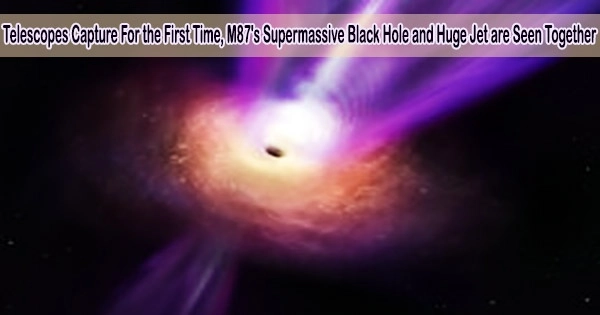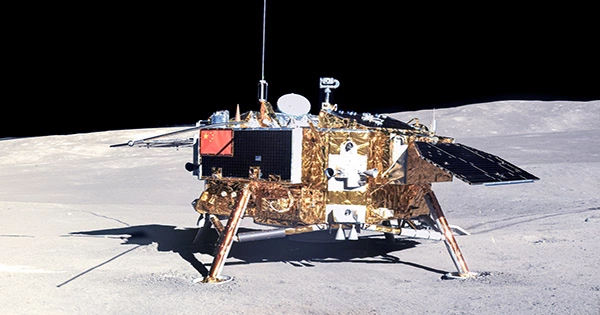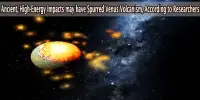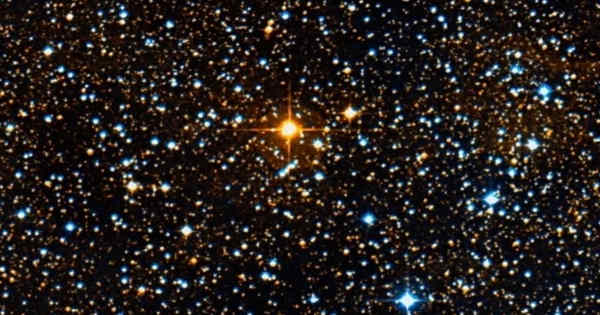The supermassive black hole at the center of the M87 galaxy is being studied by researchers, who have now revealed where the monster’s potent jet came from and captured the jet and its source in a photograph for the first time.
Furthermore, the observations have shown that the black hole’s ring is significantly bigger than previously thought. The observations are published today (April 26, 2023) in Nature.
The Global mm-VLBI Array (GMVA) united radio telescopes around the world to produce these new results, including the National Science Foundation’s National Radio Astronomy Observatory (NRAO) and Green Bank Observatory (GBO), Atacama Large Millimeter/submillimeter Array (ALMA), Very Long Baseline Array (VLBA), and Green Bank Telescope (GBT).
The SMBH at the center of the M87 galaxy is the most recognizable in the universe. The Event Horizon Telescope (EHT) produced the first photograph of a black hole, which was made public in 2019. International news outlets covered the scene of its thick, black core encircled by an ethereal ring of illumination.
“M87 has been observed over many decades, and 100 years ago we knew the jet was there, but we couldn’t place it in context,” said Ru-Sen Lu, an astronomer at the Shanghai Astronomical Observatory, leader of a Max Planck Research Group at the Chinese Academy of Sciences, and lead author of the new paper. “With GMVA, including the premier instruments at NRAO and GBO, we’re observing at a lower frequency so we’re seeing more detail and now we know there are more details to see.”
This discovery is a powerful demonstration of how telescopes possessing complementary capabilities can be used to fundamentally advance our understanding of astronomical objects and phenomena. It is exciting to see the different types of radio telescopes supported by NSF work synergistically as important elements of the GMVA to enable the big picture view of M87’s black hole and jet.
Harshal Gupta
Eduardo Ros, an astronomer and the Scientific Coordinator for Very Long Baseline Interferometry (VLBI) at the Max Planck Institute for Radio Astronomy added, “We’ve seen the ring before, but now we see the jet. This puts the ring in context and it’s bigger than we thought. If you think of it like a fire-breathing monster, before, we could see the dragon and the fire, but now we can see the dragon breathing the fire.”
The team was able to obtain a more thorough understanding of the structure of the supermassive black hole and its jet than was previously feasible using EHT, and all of the telescopes were necessary to do so.
The bright radio core of M87 could not be resolved by ALMA, but VLBA gave researchers a clear glimpse of the jet and the black hole. Astronomers were able to distinguish the ring’s large and small scale components as well as see the finer details thanks to the sensitivity of the GBT’s 100-meter collecting surface.
“The original EHT imaging revealed only a portion of the accretion disk surrounding the center of the black hole. By changing the observing wavelengths from 1.3 millimeters to 3.5 millimeters, we can see more of the accretion disk, and now the jet, at the same time. This revealed that the ring around the black hole is 50% larger than we previously believed,” said scientist Toney Minter, GMVA coordinator for the GBT.
Not only are the black hole’s components larger than earlier, shorter wavelength observations had suggested, but it is also now feasible to definitively identify the jet’s source. The magnetic fields encircling the black hole’s rotating core and the winds rising from its accretion disk produced energy that gave birth to this jet.
“These results showed for the first time where the jet is being formed. Prior to this, there were two theories about where they might come from,” said Minter. “But this observation actually showed that the energy from the magnetic fields and the winds are working together.”
Harshal Gupta, NSF Program Officer for the Green Bank Observatory, added, “This discovery is a powerful demonstration of how telescopes possessing complementary capabilities can be used to fundamentally advance our understanding of astronomical objects and phenomena. It is exciting to see the different types of radio telescopes supported by NSF work synergistically as important elements of the GMVA to enable the big picture view of M87’s black hole and jet.”
















